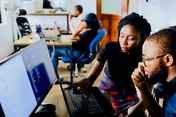Determine WHEN is the best time to survey
Many variables can factor into this decision, and finding the optimal time frame can feel like chasing a moving target. Asking young people to help decide this will yield important insights.
Here are some considerations:
- How much time do you need for the planning stage to build support, identify partners, secure funding, fill roles and get the basic infrastructure (including project charter, project calendar and management tools) in place?
- When is a good time to get the attention of participants? Summers are usually not ideal, and you will need to be sensitive to the demands of the school year, as well as any school climate or other youth surveys taking place. If you are working through an existing distribution system, such as local youth clubs, you will need to accommodate their schedule. You will also need to consider the timing of major cultural events that may limit or enhance the participation of community members.
- When can researchers schedule time to work on your project? Their heaviest periods of involvement will be before the survey is open to participants and after it closes.
- Will your materials need to be translated? For something substantial, like a data results report, you should budget at least a couple of weeks for translation. The survey and the Consent and Information Release Forms are available in English and French, but you may want to translate these, your survey platform and/or selected communications material into other languages. At a minimum, having consent forms and some promotional materials available in the languages spoken in your community is important for broadening participation.
- How much design will you require to create the website (or other survey delivery platforms), promotional materials, final report and any other communication or knowledge translation tools? Remember to build in time for revisions and any translations.
- Is there a particular time or event you are targeting to present results? For example, you may want to take advantage of an upcoming election or a conference or meeting where many of your stakeholders will be gathered and work backward from that date.
- Are there budget years that need to be accommodated, either by you or a funder?
- Are there adult or general population surveys in your community you can “pair” with?





































